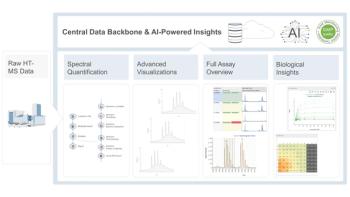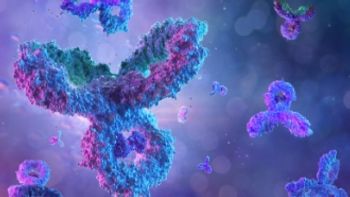
Dynorphin 1-17 Peptides Tested for Effectiveness Against Nasal Polpys
In a recent study, scientists tested how effective dynorphin 1-17 peptides can be in treating chronic rhinosinusitis with nasal polyps (CRSwNP).
In a recent study out of Universiti Sains Malaysia and Universiti Teknologi MARA in Malaysia, scientists tested how effective dynorphin 1-17 peptides and biotransformation fragments can be in treating chronic rhinosinusitis with nasal polyps (CRSwNP). Their findings were published in Analytical and Bioanalyical Chemistry (1).
CRSwNP is a condition where a person’s sinonasal mucosa, or mucus membrane, is inflamed. Nasal polyps are growths in the nose or sinuses, which can cause symptoms like sinus pain, a stuffy nose, and loss of smell (2). The condition can be triggered by various environmental factors, such as tobacco smoke, aspirin, and chemical fumes. Anyone can get nasal polyps, but they most commonly affect those between 40–60 years old, in addition to those who have asthma. While not actively life-threatening, polyps can interfere with one’s sleeping and quality of life. There are ways to treat this condition, such as nasal and oral medications, biologic injections, and surgery; however, these treatments are usually associated with inconsistency and symptom recurrence.
Dynorphin 1-17 (DYN 1-17) is a type of peptide that, along with its fragments, has shown potential in modulating one’s immune response against different inflammatory conditions (3). For this study, the scientists studied the effects of different pH and degrees of inflammation on DYN 1-17 metabolism in human CRSwNP tissue. The DYN 1-17 peptides were incubated with grades 3 and 4 inflamed tissues of CRSwNP patients, which were at pH 5.5 and pH 7.4 over multiple incubation periods. The resulting fragments were then identified using an ultra-performance liquid chromatography (UHPLC) system coupled to quadrupole-time of flight (QTOF) mass spectrometry (MS), all while considering their accurate mass.
DYN 1-17 fragmentation proved to be slower at pH 5.5 compared to pH 7.4, with the extent and metabolism rates of DYN 1-17 being much lower in grade 3 inflamed tissue (31–32 fragments) than in grade 4 inflamed tissue (34–41 fragments). Additionally, N-Terminal fragments (DYN 1-15, 1-11, 1-10, and 1-6) metabolized at pH 5.5 compared to pH 7.4. DYN 1-12, 1-8, 2-10, 4-10, 5-10, and 8-14 were solely observed under inflammatory pH, unlike DYN 5-17 and 6-17, which were only identified upon being incubated with grade 4 CRSwNP tissues.
Overall, DYN 1-17 metabolism proved to be significantly affected by pH levels and the severity of how inflamed the CRSwNP tissue samples were. These findings helped show the promise of DYN 1-17 and its fragments in modulating inflammatory responses; though there is more work to be done, DYN 1-17 shows potential as being used as a therapeutic means of addressing CRSwNP in afflicted patients.
References
(1) Ballouze, R.; Ismail, M. N.; Kassim, N. S. A.; Salhimi, S. M.; Mohamad, I.; Mutalib, N. S. A.; Hassim A. A.; Rahiman, S. S. F.Detection of Dynorphin 1-17 Biotransformation Fragments in Human Nasal Polyps by UPLC-QTOF-MS. Anal. Bioanal. Chem. 2024, 416, 545–557. DOI:
(2) Chronic Rhinosinusitis with Nasal Polyps. American College of Allergy, Asthma & Immunology 2024.
(3) Ballouze, R.; Salhimi, S. M.; Mohtar, N.; Rahiman, S. S. F. Dynorphin 1-17 Biotransformation Peptides: Properties, Challenges, and Solutions for Future Therapeutics Development. Future Med. Chem. 2023, 15 (9), 791–808. DOI:
Newsletter
Join the global community of analytical scientists who trust LCGC for insights on the latest techniques, trends, and expert solutions in chromatography.





